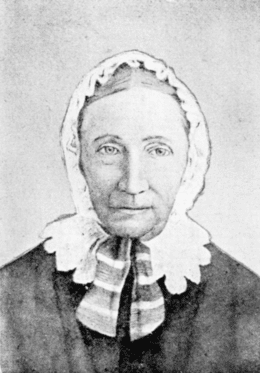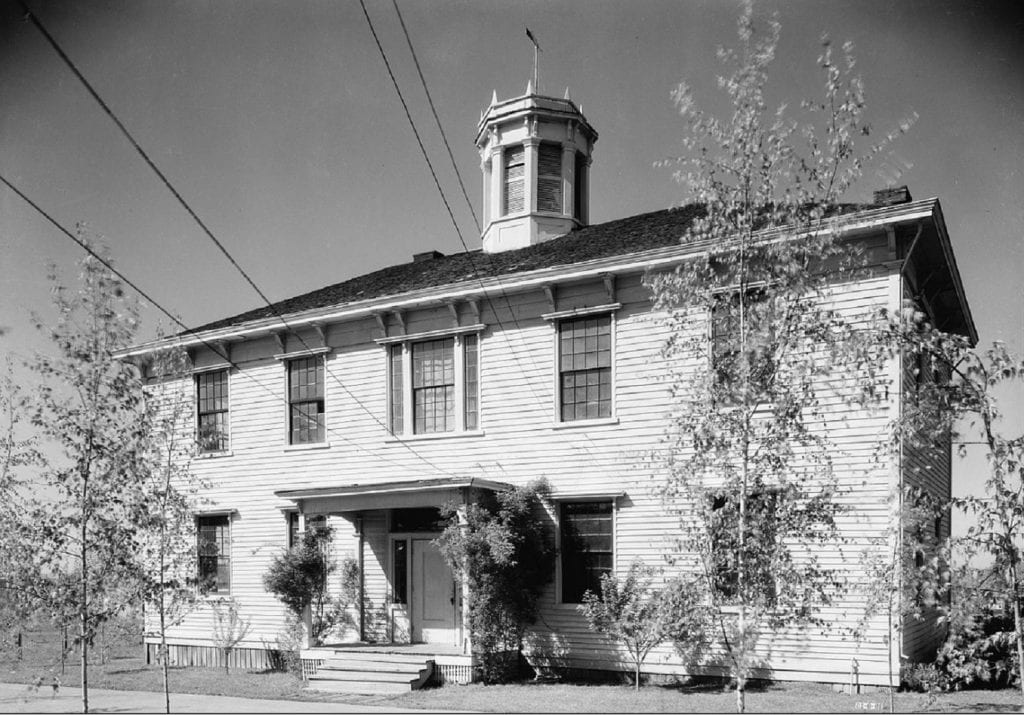The history of America’s West is filled with memorable characters whose names have been forgotten and their achievements ignored. Many of the forgotten were women, and many of those women were teachers. Teachers have been leaders in every civilization. They have educated and inspired the future generations and kept societies going straight into bright futures.

Tabitha Brown, was dubbed by her biographer, The Grandmother Teacher. It was a fitting nickname for a small, wiry widow who at age 66 left her Missouri home by wagon train for Oregon in April 1846. Mrs. Brown certainly possessed a pioneer spirit. She was born in Massachusetts, married at age nineteen, raised four children, and along with her husband served an Episcopalian parish in Charles County, Maryland, before going to Missouri to live with her brother-in-law.
Her journey to Oregon was filled with ordeals far beyond anything she could have imagined. The worst came when their guide robbed and abandoned the party 600 miles short of their destination.
The real photo postcard that inspired this Postcard History lesson is a clean, crisp image of a two-story building that by the standards of the era is quite grand. The real photo paper is the very common AZO (with boxes in the stamp-box corners) from the 1925 – 1940 era. The only writing on the card is at the bottom of the message-half of the back. It is a date: “1934.”

[In the spirit of full disclosure, this postcard has been in my “someday, I’ll do something with it” collection for more than twenty years. That is certainly enough time for me to have forgotten how and why I came to have it. As the fates have made me see its value, it was about a month ago when I was paging through a book of early American educators, when I found the image on the card being used as an illustration of an early Oregon educational academy.]
When Mrs. Brown arrived in Salem, Oregon, on Christmas Day 1846, with not much more than the clothes she was wearing, she was forced to spend the winter keeping house for a local pastor. When spring arrived, she was still penniless, but she was determined to begin working toward her goal of establishing a school. The opportunity came when she found a glove in a puddle along the edge of a road. Legend has it that the forefinger of the glove contained a picayune – a coin equivalent to a nickel. The coin made it possible for her to purchase three needles and some thread.
Her plan was to trade some of her clothes with the Kalapuya for leather. (The Kalapuya tribes had traditional homelands in the Willamette Valley.) She made gloves. Her efforts resulted in a $30 profit and the money funded a new future.
West Tualatin Plain, Oregon, (now Forest Grove) was the site of Mrs. Brown’s new future. It was there that she met a missionary couple who told her of the astonishing number of orphans coming into their village from the Oregon Trail.
When Mrs. Brown spoke to them about her wish to open a school, they volunteered to help and in 1847 their school – the Tualatin Academy – was opened to the orphans and the children of local families.
The original building still stands and has become the heart of Pacific University. It is one of the oldest buildings west of the Mississippi River.
Tabitha Brown managed to live her final years with her daughter in Salem, Oregon. She died there on May 4, 1858 – three days after her 78th birthday.
Thanks, Ray, for another fascinating history story. Both my maternal grandma and my mom were teachers. We have a street named Willamette a couple of miles from our home. For NPCW maybe I’ll work on something historical. Your story encourages my creativity to get up!
I love history! Thank you for sharing your discovery. I am pleased to hear the building has been preserved.
Great story! Thank you.
What a great history lesson, Ray! Going from Massachusetts to Oregon with all of the problems and triumphs she had truly was inspiring to read. Thanks!
I’m not surprised that she accomplished her goal to open a school because she had to have been a tough and determined lady to leave home to join a wagon train at age 66.
The tale of glove in the puddle is a lovely one. Hope I can get as much out of some of the cards in my “must look into this more carefully someday” pile!
The name of the New Orleans newspaper The Times-Picayune reflects the fact that the original price of a copy was a picayune, worth 6.25 cents (one half-bit).
Thanks for the story of Tabitha Brown. The story of her life including the travel across the country with her brother -in-law “uncle John” is wonderful. Thanks for reminding everyone of the WesternExpansion.